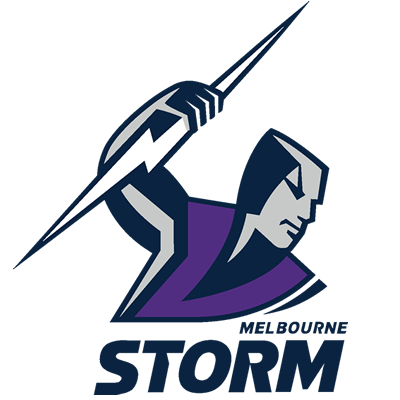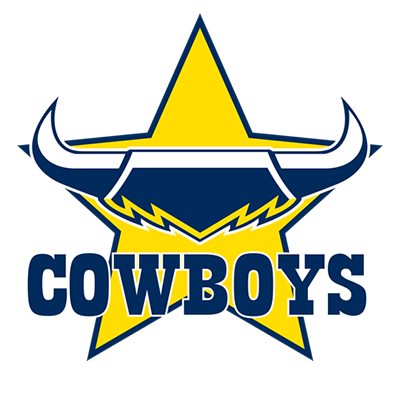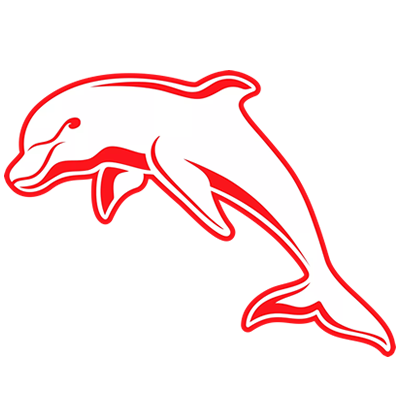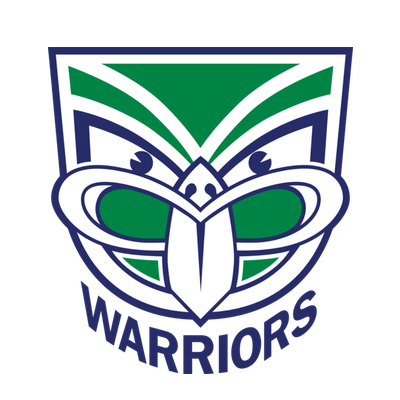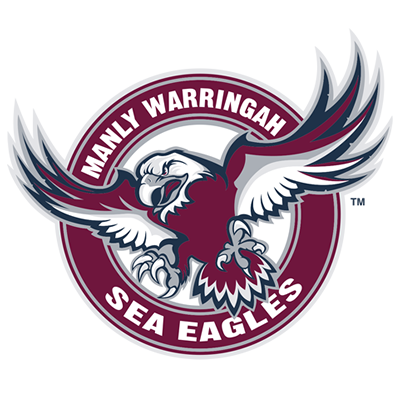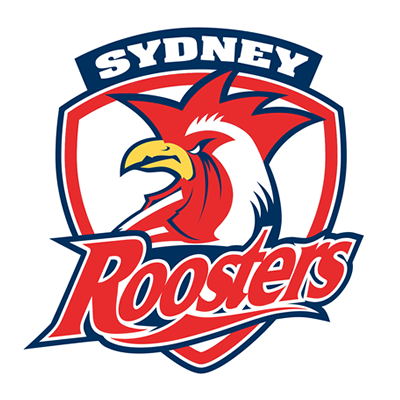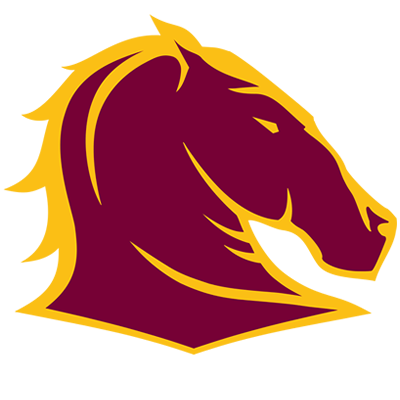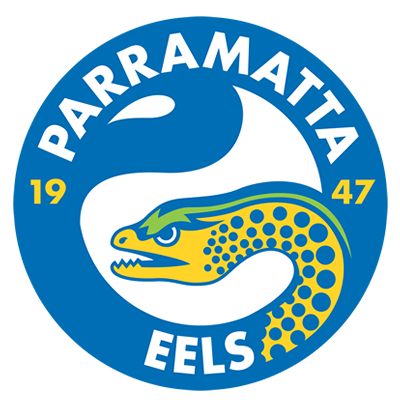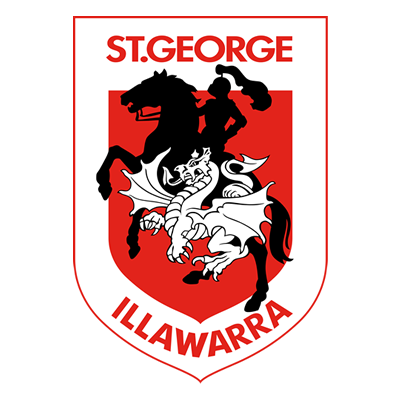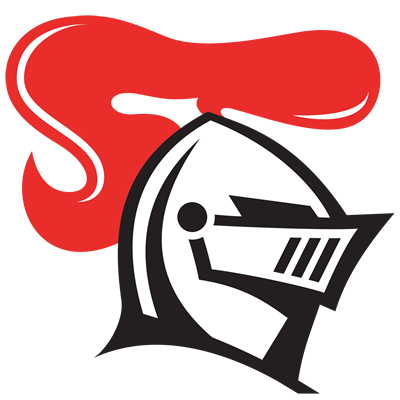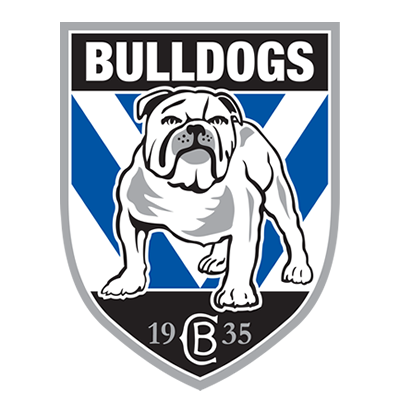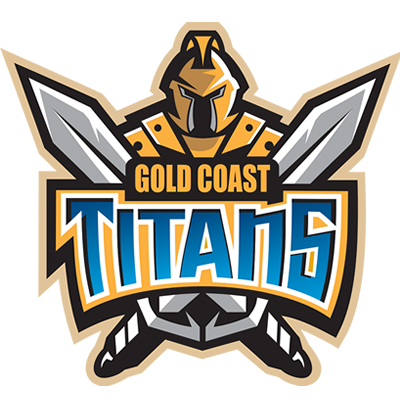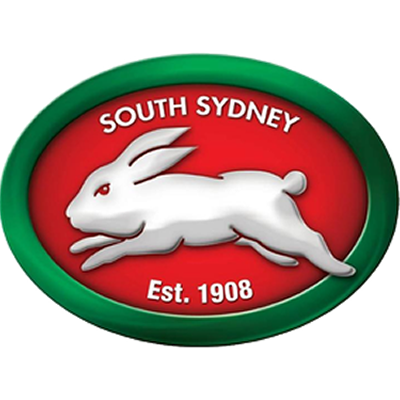Berkeley_Eagle
Current Status: 24/7 Manly Fan
Money men waiting for call up elmege & NRL players pay shrink as rivals get ric
elmege & NRL players pay shrink as rivals get ric
Money men waiting for call up: Delmege
Greg Prichard | July 31, 2008
http://www.leaguehq.com.au/news/news...097331252.html
MANLY co-owner Max Delmege is convinced there are other multi-millionaires who would be prepared to financially back NRL clubs if they were courted the right way - and he is just as sure clubs will be making genuine profits within a few years.
Delmege, whose unwavering support has been integral to the Sea Eagles turning their fortunes around on and off the field, last night revealed what he believed were the keys to the game becoming financially independent and putting itself in a much better position to stop stars such as Sonny Bill Williams switching codes.
He says expansion - and not rationalisation - is the way to go when it comes to finding the right size of the competition. Also, jumper sponsorship was enormously under-valued.
Delmege also argued the next television broadcasting deals done by the NRL should reap a major increase on what they are bringing in now and that membership was another potentially huge earner on which clubs had to focus. And, he said ,even in the days of increased poker machine taxes, leagues clubs could become more profitable.
"Privatisation is the way to go and I'm sure there are wealthy people out there who would be prepared to get involved," Delmege said. "They would just have to be approached the right way and be aware that ownership involves getting over that initial hump, before there might be any chance of a financial return.
"I've put more than $12 million of my own money into Manly and I've been prepared to do that because I love the club and the people involved there, but I've also seen the club's financial situation improve dramatically in my time there and that's obviously very important to its future.
"When I first got involved they were losing $3 million a year, but now it's down to between $200,000 and $300,000 a year. Manly's situation is improving and if the game can get the deal it deserves from the TV rights next time, then ultimately we will be able to make the club profitable.
"Other clubs will be able to become profitable, too, and that has got to be the attraction for people to get involved with financial support. It doesn't have to be an individual, either. It can be a group of people who are prepared to combine their financial inputs and come up with the right plan."
Delmege said leagues clubs complaining about taxes could do more to make their land and buildings profitable.
"The club scene has changed," he said. "Auditoriums, for instance, were used regularly in the past, but sometimes these days you see them used only once in six months for big occasions. I'm sure there are opportunities out there for clubs to lease part of their buildings for office space or use it for other profitable means.
"Downsizing is the answer for leagues clubs. They don't have to be nearly as big a space as they used to be. The pub around the corner is a lot smaller than a leagues club, but I'll guarantee you that the pub, with its poker machines, is making money.
"As far as sponsoring club jumpers goes, it has to be the cheapest form of sponsorship available. For the number of times the sponsor's name appears on the television screen during prime-time coverage of games, followed by the news, I reckon it's worth 10 times what most clubs get. It's very undersold.
"The clubs have got to increase membership - and they can, dramatically. That opportunity is there. And the competition should get bigger - not smaller - with a team on the Central Coast and another in the northern part of Queensland, perhaps Cairns.
"Sydney clubs can survive and even get healthier, if they are managed the right way. And the salary cap can go up significantly, over the next few years. It's all about addressing the main issues properly and attracting the right sort of people to back clubs. It's all very possible."
----------------------------------------------------------------------------
NRL players' pay shrinks as rivals get rich
Andrew Stevenson | July 31, 2008
http://www.leaguehq.com.au/news/news/nrl-players-pay-shrinks-as-rivals-get-rich/2008/07/30/1217097331252.html?page=fullpage#contentSwap1
  RUGBY LEAGUE player salaries have slipped since the end of the Super League war - while footballers in rival codes are reaping huge increases in their annual incomes, with the prospect of more to come.
The average annual salary for the top 25 players at NRL clubs this year will be $164,000, down on the average of $226,000 paid by the top five clubs in 1999, according to research by Braham Dabscheck, a University of Melbourne academic who has been analysing professional team sports for three decades.
Dabscheck argues elite league players have been forced to wear a pay cut of 27 per cent - while their competitors in rugby union have reaped a rich harvest from the advent of the professional game, with their salaries jumping from $124,000 to $224,000 in the same period, an increase 81 per cent.
AFL salaries are up by 68 per cent, and football clubs, with the introduction of the A-League, have more than doubled payments to players under the old NSL, Dabscheck reports.
The NRL consistently defends its salary cap as an essential weapon in the fight to rein in costs and prevent clubs from going broke.
"However, unlike the other three football codes, its salary cap has not been linked to revenue," Dabscheck said. "The problem with a sporting league that adopts a policy of cost minimisation rather than revenue maximisation is that it reduces its ability to grow the sport."
Dabscheck's argument is the NRL is engaged in a process of ever-diminishing returns if it continues to concentrate on costs.
"They're cost minimisers rather than revenue maximisers, and the only asset they've got to maximise revenue is players," he argued. "But the thing that sells the sport is players. By keeping costs down, and in fact encouraging players to go elsewhere, what you're doing is reducing your ability to market your sport."
In rugby league's centenary year, the share of the game's revenue flowing to players has hit an all-time low. According to league historian Sean Fagan, at the game's inception, league clubs paid more than 90 per cent of their revenue to players. The pattern continued for decades, with takings being shared at the end of the season at a "Pay Out Night".
"The club secretary would call up all the players and they would each be given their bonus cheques - this was a division of the club's income from gate receipts, and players received a share based on how many games they played," Fagan explained.
"Effectively, each rugby league club ended the season broke."
In the 1970s, according to Ken Arthurson, secretary of the all-conquering Manly club, the lion's share of revenue went to players. "Really, there wasn't too much expenditure other than that - there was myself and a secretary," Arthurson said.
Even when then NSWRL supremo John Quayle first proposed a salary cap in the 1980s, the intention was that 75 per cent of revenue should flow to players. (In the 1980s, the majority of clubs were teetering on insolvency.) Under the existing salary cap, the poorest Sydney teams - with annual revenue of $11.5 million - spend only just over one-third of their income on their top 25 players, with the cap of $4.1 million preventing them going any higher. At the game's strongest club, Brisbane, one-fifth of revenue is returned to players.
Instead the money flows to coaches, support staff, training facilities and administrative personnel - with their share of the game's turnover rising at a dramatic rate, in part, argued Fagan, because of the salary cap.
"The cap only stops them spending money on players; it doesn't stop the space race with everything else. If you can raise $15 million, you'll spend $15 million and if you can only spend $4 million on players, you'll find somewhere else to spend it," he said.
Arthurson, a fan of the cap, noted the huge staffs all clubs employed. "I don't know how much money they pay them but their expenses have gone up astronomically," he said.
Dabscheck said the NRL should be opening the game to further investment by allowing a wider interpretation of third-party sponsorships of players, arguing the rules "push away parties that would like to invest in the game".
"You could still have a salary cap but if you enabled investors to 'top-up' player salaries, that would bring more money in," he said. "The problem is there would be income inequalities, but you could solve that by redistribution from the league's broadcasting deals."
Money men waiting for call up: Delmege
Greg Prichard | July 31, 2008
http://www.leaguehq.com.au/news/news...097331252.html
MANLY co-owner Max Delmege is convinced there are other multi-millionaires who would be prepared to financially back NRL clubs if they were courted the right way - and he is just as sure clubs will be making genuine profits within a few years.
Delmege, whose unwavering support has been integral to the Sea Eagles turning their fortunes around on and off the field, last night revealed what he believed were the keys to the game becoming financially independent and putting itself in a much better position to stop stars such as Sonny Bill Williams switching codes.
He says expansion - and not rationalisation - is the way to go when it comes to finding the right size of the competition. Also, jumper sponsorship was enormously under-valued.
Delmege also argued the next television broadcasting deals done by the NRL should reap a major increase on what they are bringing in now and that membership was another potentially huge earner on which clubs had to focus. And, he said ,even in the days of increased poker machine taxes, leagues clubs could become more profitable.
"Privatisation is the way to go and I'm sure there are wealthy people out there who would be prepared to get involved," Delmege said. "They would just have to be approached the right way and be aware that ownership involves getting over that initial hump, before there might be any chance of a financial return.
"I've put more than $12 million of my own money into Manly and I've been prepared to do that because I love the club and the people involved there, but I've also seen the club's financial situation improve dramatically in my time there and that's obviously very important to its future.
"When I first got involved they were losing $3 million a year, but now it's down to between $200,000 and $300,000 a year. Manly's situation is improving and if the game can get the deal it deserves from the TV rights next time, then ultimately we will be able to make the club profitable.
"Other clubs will be able to become profitable, too, and that has got to be the attraction for people to get involved with financial support. It doesn't have to be an individual, either. It can be a group of people who are prepared to combine their financial inputs and come up with the right plan."
Delmege said leagues clubs complaining about taxes could do more to make their land and buildings profitable.
"The club scene has changed," he said. "Auditoriums, for instance, were used regularly in the past, but sometimes these days you see them used only once in six months for big occasions. I'm sure there are opportunities out there for clubs to lease part of their buildings for office space or use it for other profitable means.
"Downsizing is the answer for leagues clubs. They don't have to be nearly as big a space as they used to be. The pub around the corner is a lot smaller than a leagues club, but I'll guarantee you that the pub, with its poker machines, is making money.
"As far as sponsoring club jumpers goes, it has to be the cheapest form of sponsorship available. For the number of times the sponsor's name appears on the television screen during prime-time coverage of games, followed by the news, I reckon it's worth 10 times what most clubs get. It's very undersold.
"The clubs have got to increase membership - and they can, dramatically. That opportunity is there. And the competition should get bigger - not smaller - with a team on the Central Coast and another in the northern part of Queensland, perhaps Cairns.
"Sydney clubs can survive and even get healthier, if they are managed the right way. And the salary cap can go up significantly, over the next few years. It's all about addressing the main issues properly and attracting the right sort of people to back clubs. It's all very possible."
----------------------------------------------------------------------------
NRL players' pay shrinks as rivals get rich
Andrew Stevenson | July 31, 2008
http://www.leaguehq.com.au/news/news/nrl-players-pay-shrinks-as-rivals-get-rich/2008/07/30/1217097331252.html?page=fullpage#contentSwap1
  RUGBY LEAGUE player salaries have slipped since the end of the Super League war - while footballers in rival codes are reaping huge increases in their annual incomes, with the prospect of more to come.
The average annual salary for the top 25 players at NRL clubs this year will be $164,000, down on the average of $226,000 paid by the top five clubs in 1999, according to research by Braham Dabscheck, a University of Melbourne academic who has been analysing professional team sports for three decades.
Dabscheck argues elite league players have been forced to wear a pay cut of 27 per cent - while their competitors in rugby union have reaped a rich harvest from the advent of the professional game, with their salaries jumping from $124,000 to $224,000 in the same period, an increase 81 per cent.
AFL salaries are up by 68 per cent, and football clubs, with the introduction of the A-League, have more than doubled payments to players under the old NSL, Dabscheck reports.
The NRL consistently defends its salary cap as an essential weapon in the fight to rein in costs and prevent clubs from going broke.
"However, unlike the other three football codes, its salary cap has not been linked to revenue," Dabscheck said. "The problem with a sporting league that adopts a policy of cost minimisation rather than revenue maximisation is that it reduces its ability to grow the sport."
Dabscheck's argument is the NRL is engaged in a process of ever-diminishing returns if it continues to concentrate on costs.
"They're cost minimisers rather than revenue maximisers, and the only asset they've got to maximise revenue is players," he argued. "But the thing that sells the sport is players. By keeping costs down, and in fact encouraging players to go elsewhere, what you're doing is reducing your ability to market your sport."
In rugby league's centenary year, the share of the game's revenue flowing to players has hit an all-time low. According to league historian Sean Fagan, at the game's inception, league clubs paid more than 90 per cent of their revenue to players. The pattern continued for decades, with takings being shared at the end of the season at a "Pay Out Night".
"The club secretary would call up all the players and they would each be given their bonus cheques - this was a division of the club's income from gate receipts, and players received a share based on how many games they played," Fagan explained.
"Effectively, each rugby league club ended the season broke."
In the 1970s, according to Ken Arthurson, secretary of the all-conquering Manly club, the lion's share of revenue went to players. "Really, there wasn't too much expenditure other than that - there was myself and a secretary," Arthurson said.
Even when then NSWRL supremo John Quayle first proposed a salary cap in the 1980s, the intention was that 75 per cent of revenue should flow to players. (In the 1980s, the majority of clubs were teetering on insolvency.) Under the existing salary cap, the poorest Sydney teams - with annual revenue of $11.5 million - spend only just over one-third of their income on their top 25 players, with the cap of $4.1 million preventing them going any higher. At the game's strongest club, Brisbane, one-fifth of revenue is returned to players.
Instead the money flows to coaches, support staff, training facilities and administrative personnel - with their share of the game's turnover rising at a dramatic rate, in part, argued Fagan, because of the salary cap.
"The cap only stops them spending money on players; it doesn't stop the space race with everything else. If you can raise $15 million, you'll spend $15 million and if you can only spend $4 million on players, you'll find somewhere else to spend it," he said.
Arthurson, a fan of the cap, noted the huge staffs all clubs employed. "I don't know how much money they pay them but their expenses have gone up astronomically," he said.
Dabscheck said the NRL should be opening the game to further investment by allowing a wider interpretation of third-party sponsorships of players, arguing the rules "push away parties that would like to invest in the game".
"You could still have a salary cap but if you enabled investors to 'top-up' player salaries, that would bring more money in," he said. "The problem is there would be income inequalities, but you could solve that by redistribution from the league's broadcasting deals."


